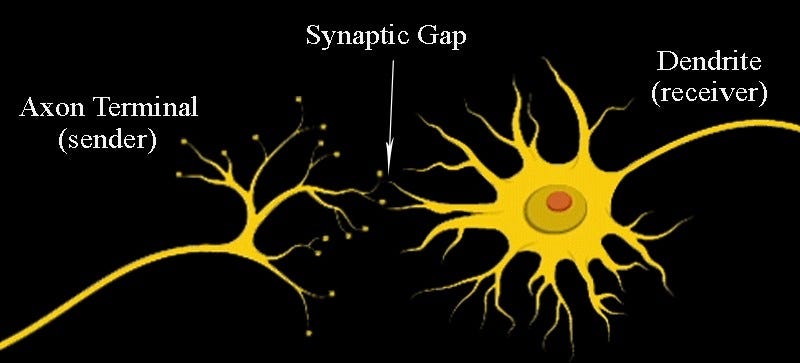Exploring the Neural Impact of Cocaine on the Human Brain
Written on
Understanding Cocaine's Effects
Cocaine is widely recognized as one of the most prevalent hard drugs globally. Primarily sourced from Colombia, it sees significant consumption in countries like the United States and the United Kingdom. The illicit cocaine trade is estimated to be worth around $120 billion. But what exactly causes the distinctive euphoric and stimulating high associated with cocaine use? Moreover, why does it have such a powerful addictive quality? The mechanisms through which cocaine interacts with the brain are complex and deeper than we might initially think.

1. Euphoria and Confidence — The Role of Dopamine
The primary action of cocaine is its influence on dopamine levels in the brain. Dopamine, a neurotransmitter, is crucial for experiencing pleasure and is released during activities such as eating or sexual intercourse. It plays a significant role in motivation and behaviors tied to rewards; when we engage in activities our brains consider beneficial, dopamine is released, creating a pleasurable sensation that encourages us to repeat those behaviors.
This process predominantly occurs in the nucleus accumbens (NAc), a key component of the brain's reward circuitry, where dopamine receptors are concentrated. Neurons possess two main parts: one that transmits signals and another that receives them. These parts, although facing each other, do not touch, and the minute space in between is known as the synapse.

Chemical messengers called neurotransmitters facilitate communication between brain cells. When dopamine is released from one neuron, it travels across the synapse to bind with receptors on another neuron, akin to a key fitting into a lock. Activating these receptors sends pleasure signals throughout the receiving neuron. Afterward, dopamine detaches from the receptor and returns to the synapse in a process called reuptake.
Cocaine disrupts this system by overwhelming the synapse with excess dopamine while simultaneously blocking its reuptake. This results in an abundance of dopamine molecules flooding the synapse, leading to heightened pleasure signals throughout the brain. Additionally, cocaine also impacts glial cells within the immune system, triggering an inflammatory response that excites neurons and results in further dopamine release. This mechanism underlies the euphoric sensation experienced during cocaine use.
In this brief video, "2-Minute Neuroscience: Effects of Cocaine," you will gain insights into how cocaine influences dopamine levels and the resulting physiological effects.
2. Energy and Cardiovascular Stress — The Role of Norepinephrine
Cocaine also interacts with norepinephrine receptors, albeit with a somewhat less intense impact compared to dopamine. Norepinephrine, often referred to as noradrenaline, is a hormone linked to the body's fight-or-flight response, enhancing heart rate, redirecting blood flow to muscles, and raising blood sugar levels.
The characteristic energetic and 'invincible' high attributed to cocaine stems from the combination of dopamine and norepinephrine activation in the brain, explaining the simultaneous feelings of euphoria and heightened energy. However, norepinephrine also constricts blood vessels, causing an increase in heart rate while reducing the space available for blood flow, which results in elevated blood pressure. This combination puts significant strain on the heart and circulatory system, especially with prolonged cocaine use.

3. Stress Responses — The Ventral Tegmental Area
The mesolimbic pathway, where cocaine most profoundly impacts dopamine levels, originates in the ventral tegmental area (VTA). While cocaine does not seem to influence other stress hormones significantly, the VTA serves as a crucial integration center in the brain, relaying information regarding stress, pleasure, and various cues throughout the brain. Consequently, cocaine's activation of the mesolimbic pathway can amplify stress signals across the brain, even if the pleasurable and stimulating effects often overshadow this response.

4. Addiction Mechanisms — Gene Expression Changes
Perhaps the most intriguing aspect of cocaine's effects on the brain is its ability to alter gene expression, which can result in severe addiction. Research indicates that cocaine can modify how genes respond and produce cells. Each individual has about 30,000 genes, present in every cell, which dictate cell function and development.
For instance, during weightlifting, muscle cells adapt in response to increased demand, enhancing their capacity over time. This adaptation occurs through gene expression, essentially adjusting how much work a cell can manage. Cocaine influences gene expression in the NAc, particularly affecting a protein called ΔFosB, a significant transcription factor that regulates gene activity.
Studies involving mice have shown that elevated levels of ΔFosB lead to increased susceptibility to addictive behaviors. Conversely, reduced levels of this protein result in decreased addiction potential. The presence of ΔFosB effectively turns up the dial on genes associated with addictive behavior. Since ΔFosB has a lifespan of approximately 6–8 weeks before breaking down, regular cocaine use can cause its accumulation, resulting in new cells inheriting this heightened addiction potential.

5. Long-Term Personality Transformations — Neural Adaptation
Beyond altering gene expression, consistent cocaine use can lead to significant long-term changes in personality. The brain exhibits remarkable adaptability, known as plasticity. It develops a baseline for dopamine levels, so when excessive dopamine circulates for extended periods, the brain may compensate by reducing its dopamine production or decreasing the number of receptors in receiving cells.
A balanced level of dopamine activation is essential for mood regulation and overall function. A deficiency in dopamine or receptors can trigger withdrawal symptoms, as there isn't enough dopamine activation to support positive behaviors or maintain mood stability. This scenario is also responsible for the comedown associated with cocaine use, as the drug's effects wear off and dopamine levels drop below baseline.
The intensity of cocaine use directly correlates with the peak high experienced, the extent of dopamine hijacked by the drug, and the subsequent dopamine deficit. The stimulation of ΔFosB not only enhances addictive behaviors but also promotes the growth of neuronal dendrites, the components of brain cells that receive signals from other cells. An increase in dendritic growth enhances the cell's ability to pick up signals, potentially leading to long-term changes in how memory, emotion, and learning are perceived—factors closely tied to reward-based behaviors.

Cocaine remains a powerful and complex substance with the potential for severe consequences. It can bring about lasting alterations in brain function, enhance addictive tendencies, and adversely impact cardiovascular health. Ongoing research will continue to shed light on this widely abused drug and its effects.
This article is intended for informational purposes only and does not endorse or advocate the use, production, or purchase of cocaine or any illegal substances.
The second video, "The Reward Circuit: How the Brain Responds to Cocaine," offers an in-depth look at the brain's reward pathways and their responses to cocaine.